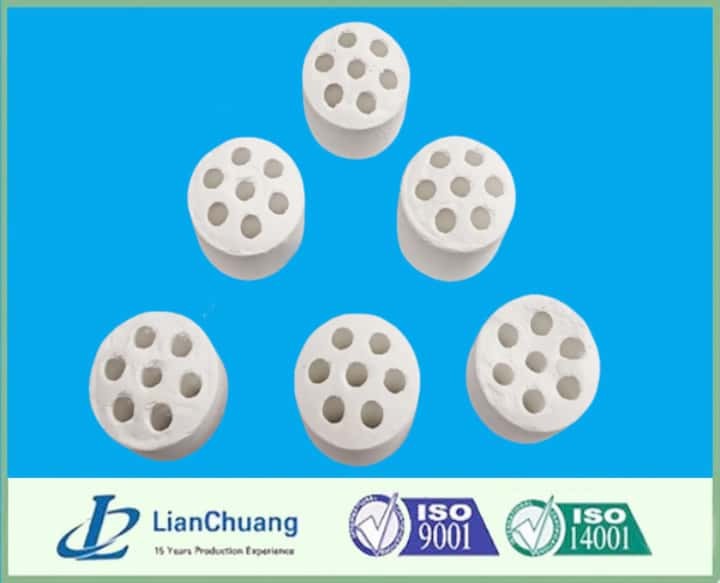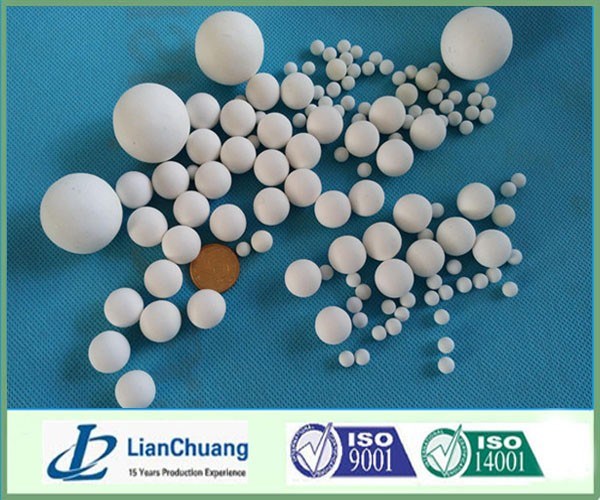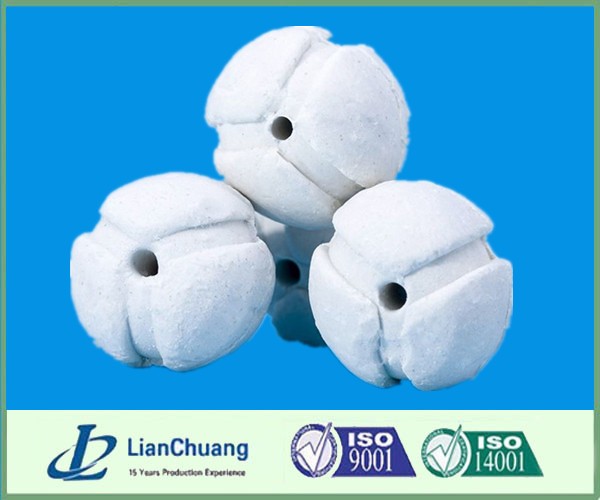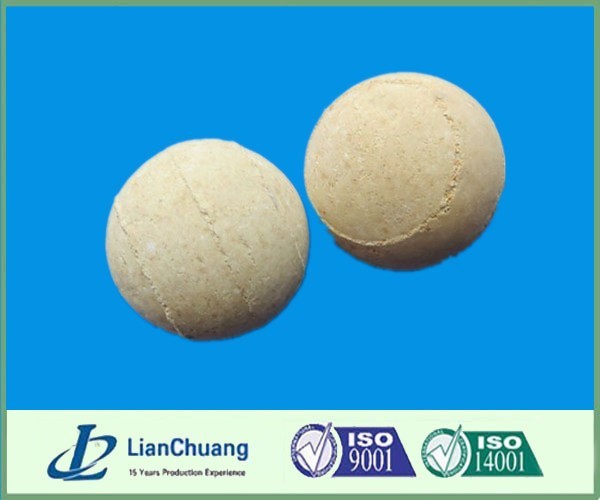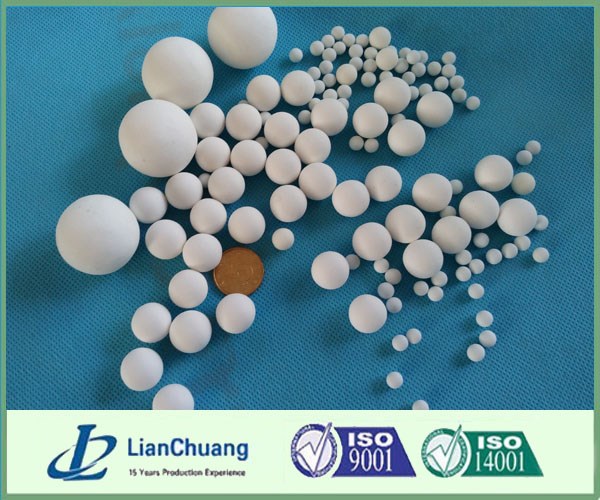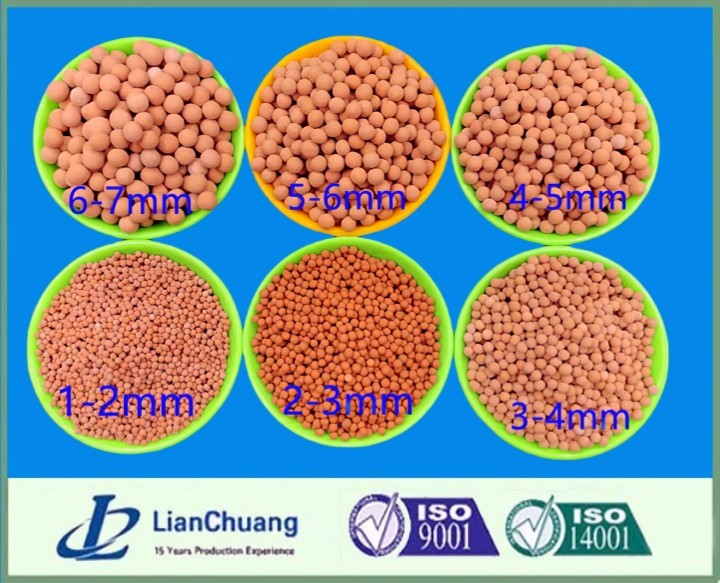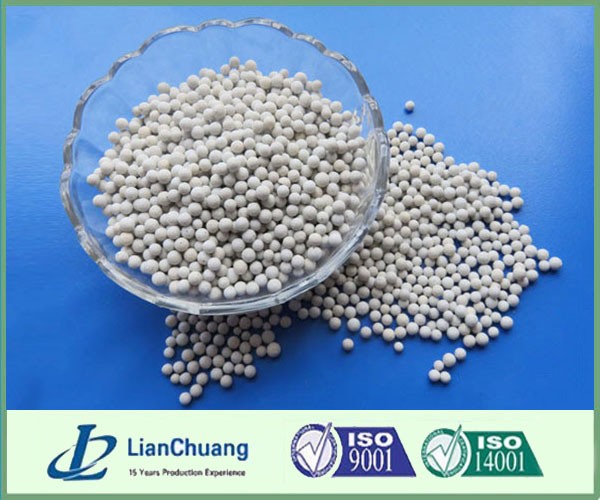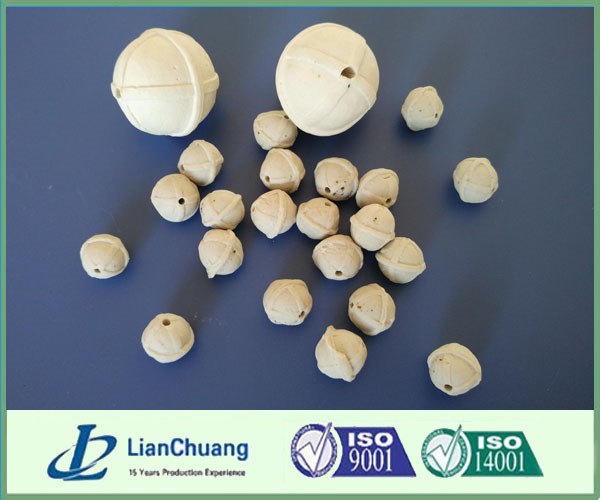Product Description
Catalyst carriers are indispensable in the chemical and petrochemical sectors, serving as porous substrates that facilitate the conversion of gases and liquids into essential products like fuels, chemicals, and lubricants. These carriers play a vital role in high-temperature hydrocarbon cracking, where the quality of the substrate is critical to the refining process's efficiency. Alumina is a favored material for catalyst carriers due to its high-temperature stability, which makes it a perfect choice for this application. It provides a stable platform for the catalyst, without reacting with the reactants or degrading over time. The pore structure of alumina is crucial in optimizing catalytic reactions, as the particle size distribution directly influences the size of the pores, underscoring the importance of material consistency in these substrates.
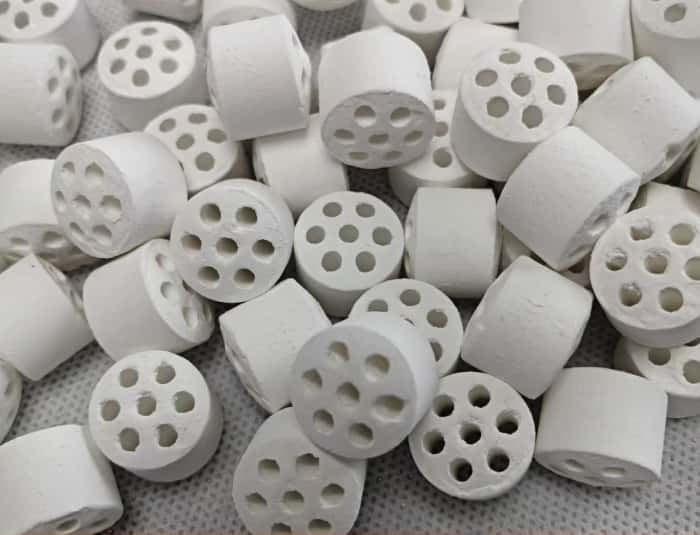
The 7-hole honeycomb alumina catalyst carrier is primarily made from high-purity alumina, which is prized for its high porosity, superior gas-liquid separation rate, and effective gas-liquid distribution. These properties significantly enhance the reaction efficiency in gas-liquid interactions. Compared to traditional products, its delivery efficiency can be increased by 300-400%. This catalyst carrier is user-friendly and predominantly used in the petrochemical industry. Alumina-based catalyst carriers are also widely used in various catalytic processes such as hydrocracking, catalytic cracking, hydrodesulfurization, and catalytic reforming, in addition to playing a key role in several environmental applications, including emission control and wastewater treatment. They provide a durable and efficient support for catalysts, enabling the transformation of raw materials into valuable products and mitigating environmental pollutants.
Chemical Composition
| Component | Content |
|---|---|
| Al2O3+SiO2 | > 99% |
| Al2O3 | 90-99% |
| Fe2O3 | < 0.06% |
| MgO | < 0.06% |
| K2O+Na2O+CaO | < 0.1% |
| Other | < 0.1% |
Specifications
| Unit | Data | Value |
|---|---|---|
| Diameter | mm | 18mm |
| Height | mm | 16mm |
| Hole Size | mm | 3mm |
| Unit Weight | g | 4.95 |
| Bulk Density | g/ml | 0.45 |
| Strength | N/cm | 60 |
| Pore Volume | ml/g | 0.76 |
| Surface Area | m²/g | 222.98 |
| Water Absorption | % | 74 |
| Maximum Operating Temperature | ℃ | 1650 |
| Softening Temperature | ℃ | 1730 |
| Acid Resistance | % | 99.54 |
| Specific Heat | KJ/Kg·K | 1.2~1.4 |
| Alkali Resistance | % | 98.05 |
Advantages
- High porosity and excellent gas-liquid distribution.
- Large specific surface area and low resistance.
- Exceptional acid resistance and good durability.
- Easy to use with wide applicability.
Key Features and Functions
- High Specific Surface Area: The high specific surface area of alumina catalyst carriers maximizes the contact between the catalyst and the reactants, thereby improving the efficiency of chemical reactions.
- Porosity: Their porous structure allows reactants and products to enter and exit the catalyst bed, facilitating uniform distribution and preventing channeling, ensuring optimal catalyst usage.
- Thermal Stability: Alumina catalyst carriers have exceptional thermal stability, withstanding the high temperatures commonly encountered in industrial catalytic processes without significant degradation or structural changes.
- Chemical Inertness: Under typical reaction conditions, alumina catalyst carriers are chemically inert, ensuring that they do not participate in reactions or introduce unwanted impurities into the reaction mixture.
- Mechanical Strength: These carriers exhibit sufficient mechanical strength to withstand the stresses encountered during handling, transportation, and in industrial reactors.
- Customizability: By adjusting parameters such as particle size, pore distribution, specific surface area, and chemical composition, the performance of alumina catalyst carriers can be tailored to meet various application requirements.
Applications
Alumina-based catalyst carriers are widely used across several industries due to their favorable physical and chemical properties. Some common applications include:
- Hydrocarbon Processing: Alumina catalyst carriers are extensively used in the hydrocarbon processing industry, including petroleum refining and petrochemical production. They support catalysts in processes such as fluid catalytic cracking (FCC), hydrocracking, catalytic reforming, and isomerization, all of which are crucial for converting crude oil fractions into valuable fuels and petrochemical feedstocks.
- Environmental Catalysis: In environmental applications, alumina catalyst carriers play a significant role in reducing harmful emissions from industrial processes and vehicles. They are employed in catalytic converters to help convert toxic pollutants such as carbon monoxide (CO), nitrogen oxides (NOx), and hydrocarbons into less harmful substances like carbon dioxide (CO2), nitrogen (N2), and water (H2O).
- Petrochemical Production: Alumina catalyst carriers are vital in the production of key petrochemical products such as ethylene, propylene, and aromatics. They are used in catalytic processes like steam cracking, methanol synthesis, and Fischer-Tropsch synthesis to convert hydrocarbons into higher-value products.
- Environmental Remediation: Alumina catalyst carriers are used in environmental remediation efforts to treat polluted air and water. They are employed in catalytic oxidation processes to remove volatile organic compounds (VOCs) from industrial emissions and in water treatment systems to degrade organic pollutants.
- Ammonia Production: Ammonia, a critical precursor for fertilizers and various chemicals, is produced via the Haber-Bosch process, where alumina catalyst carriers play a crucial role as supports for catalysts in the synthesis of ammonia from nitrogen and hydrogen.
